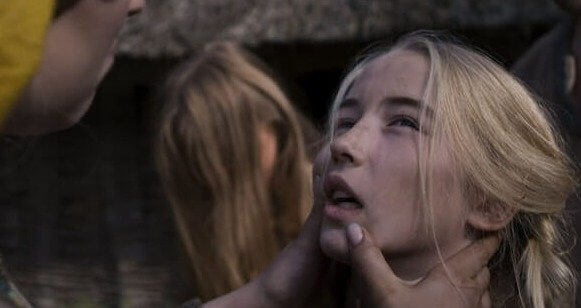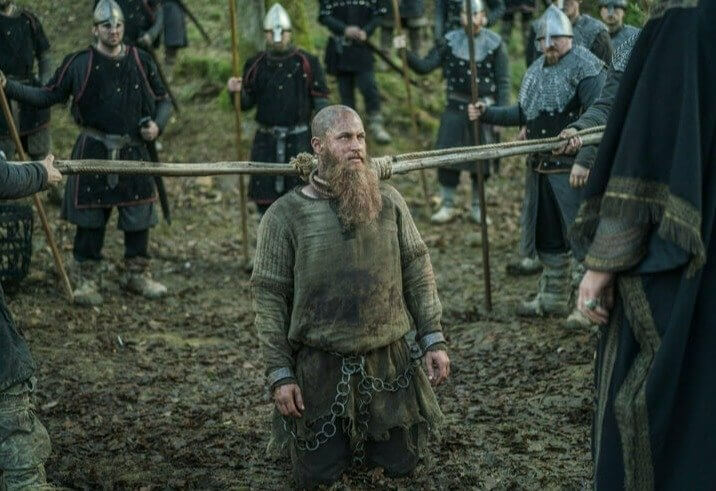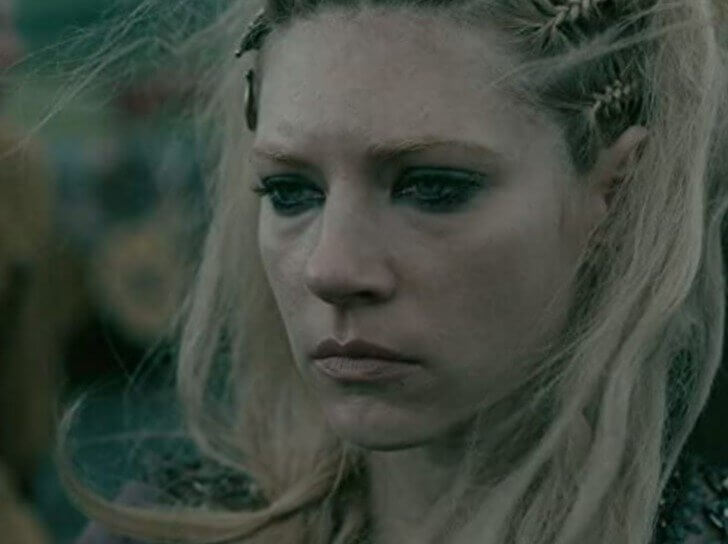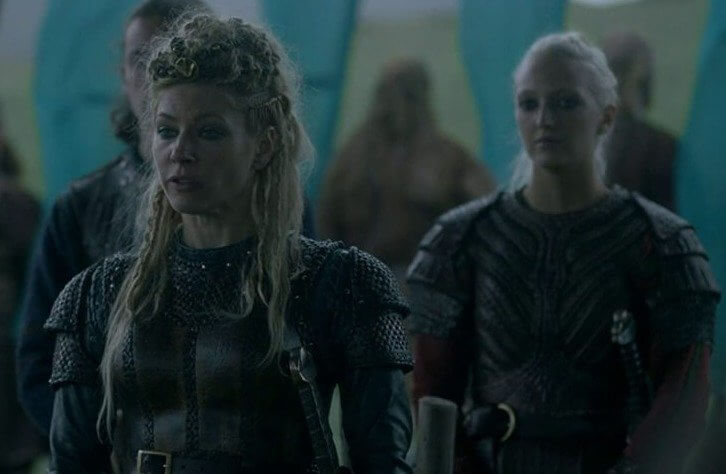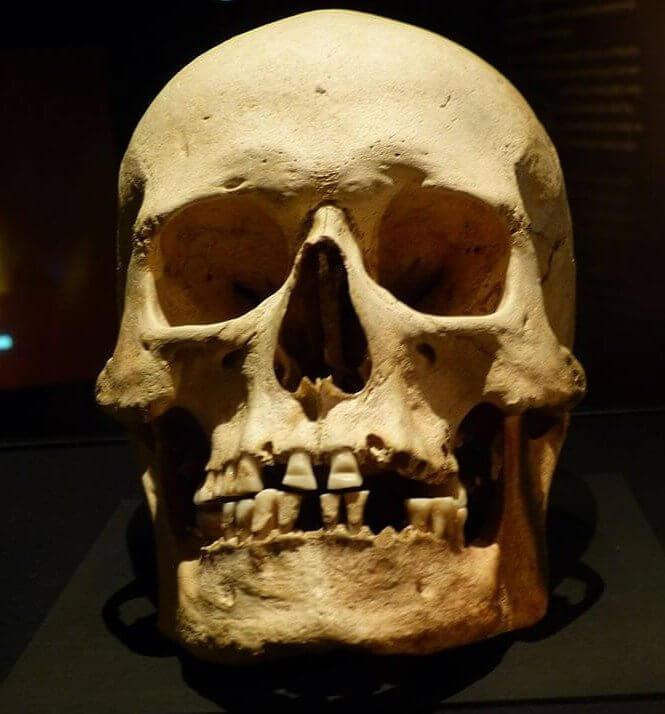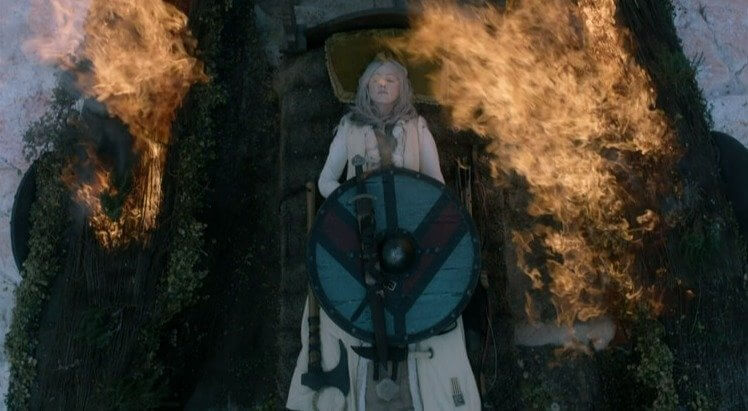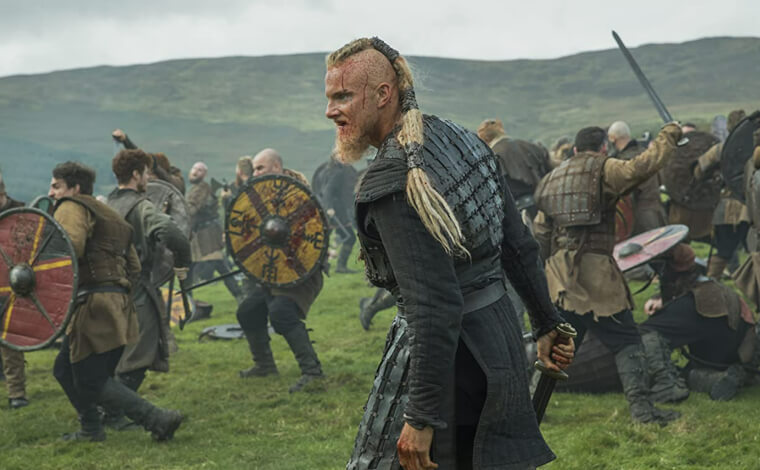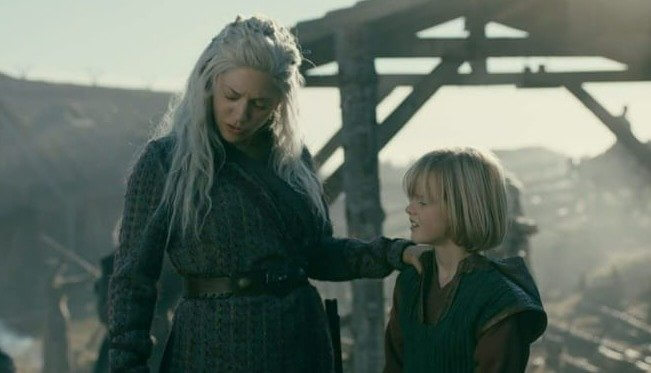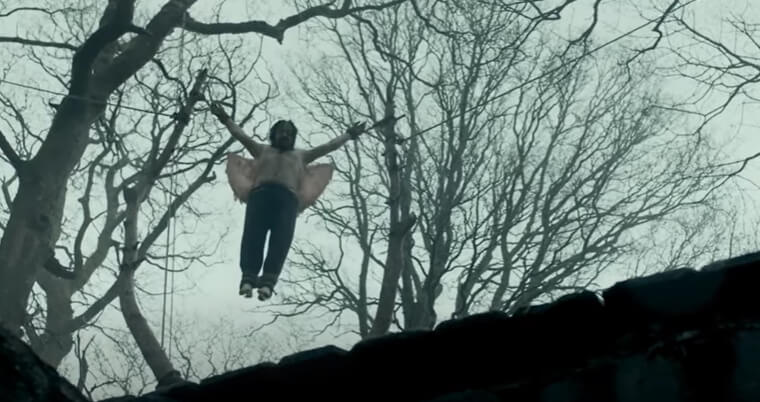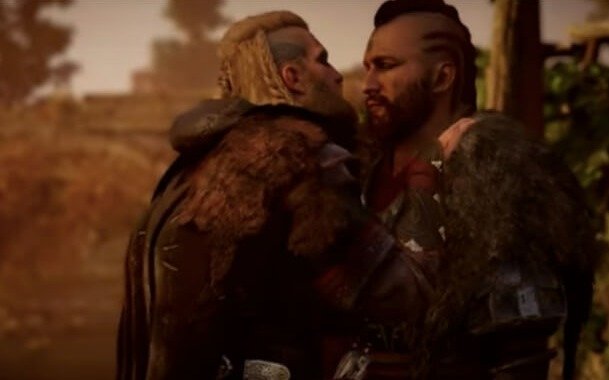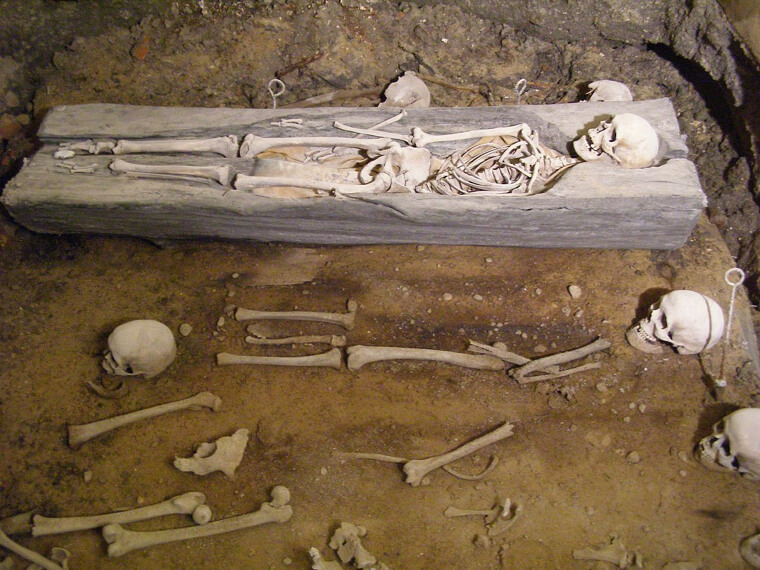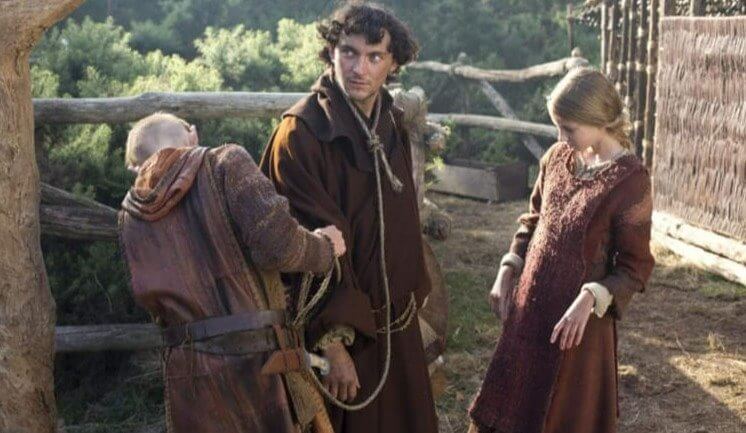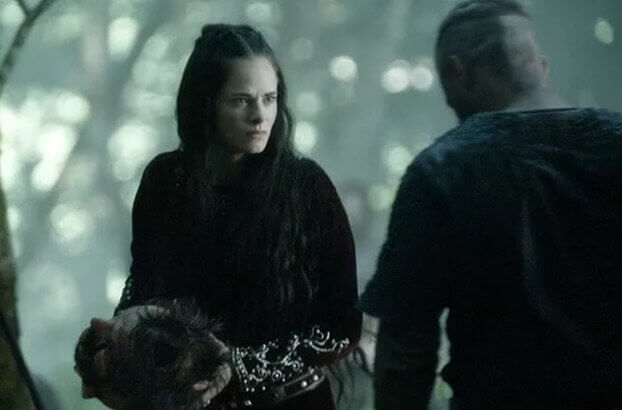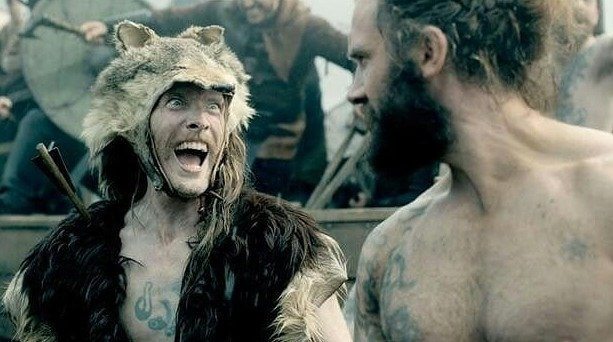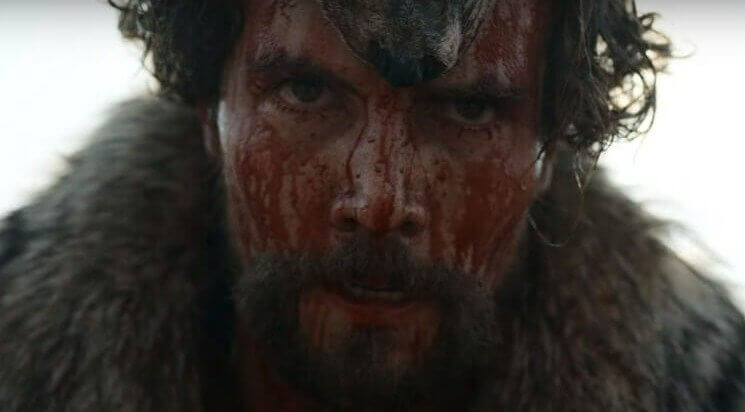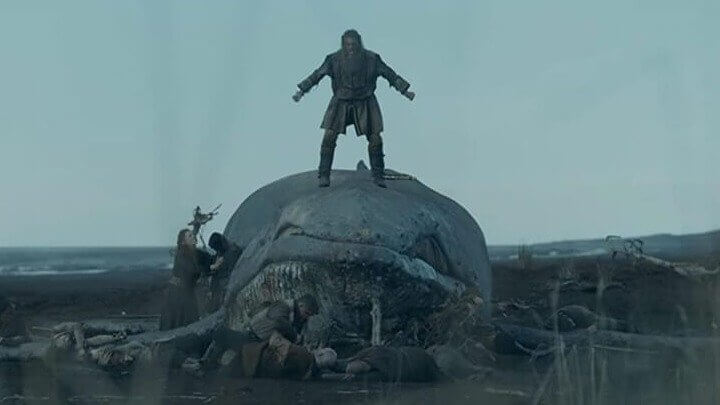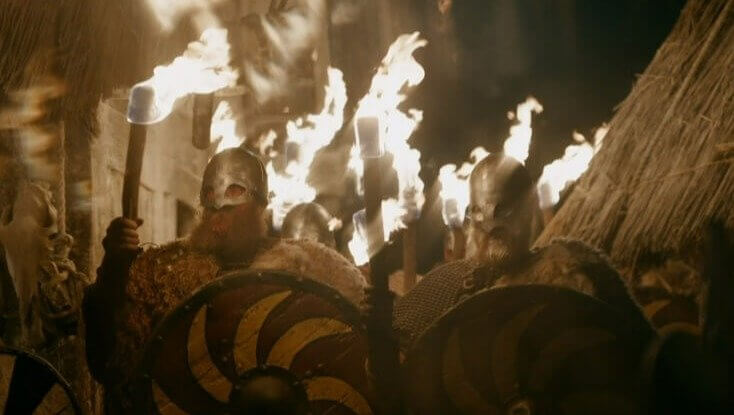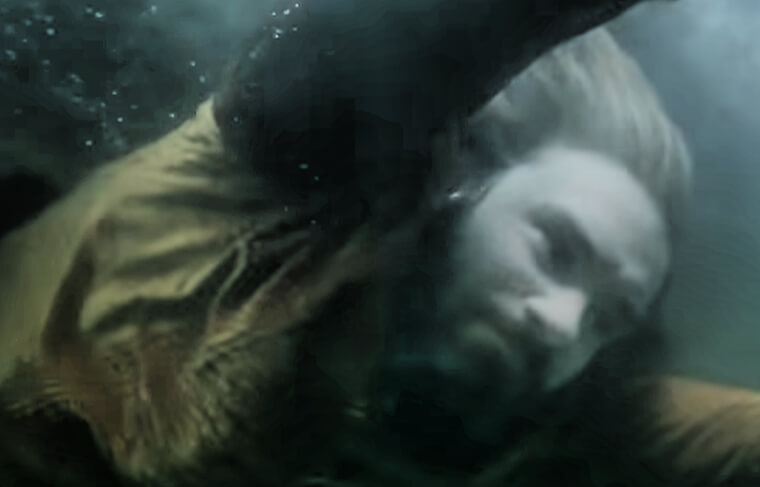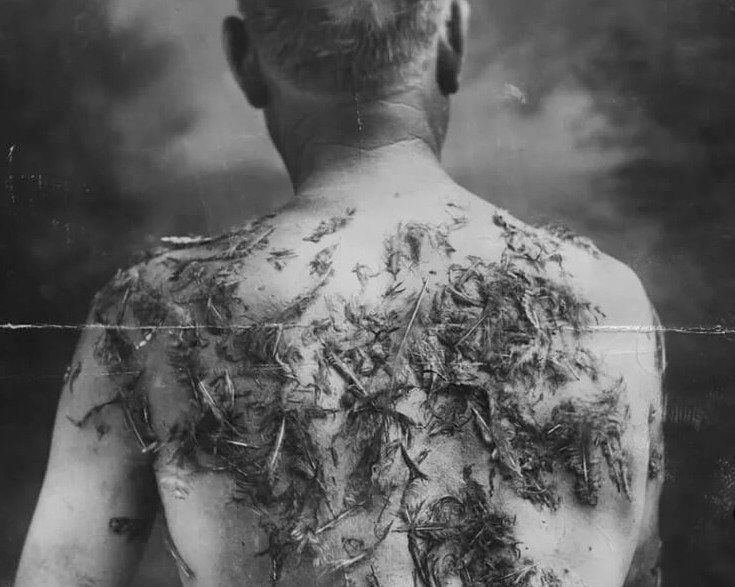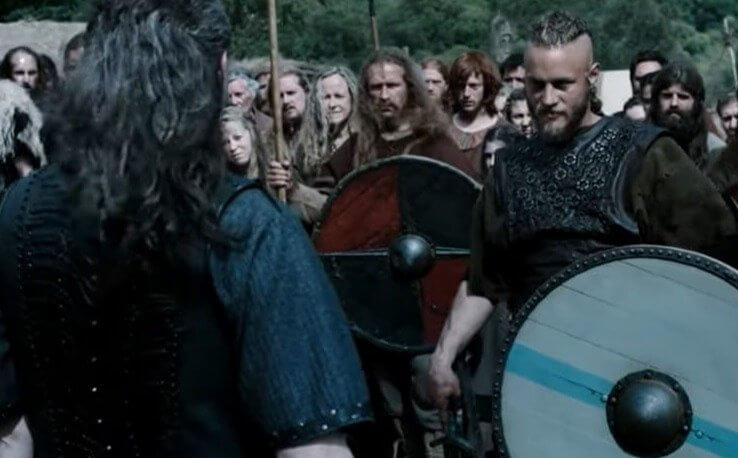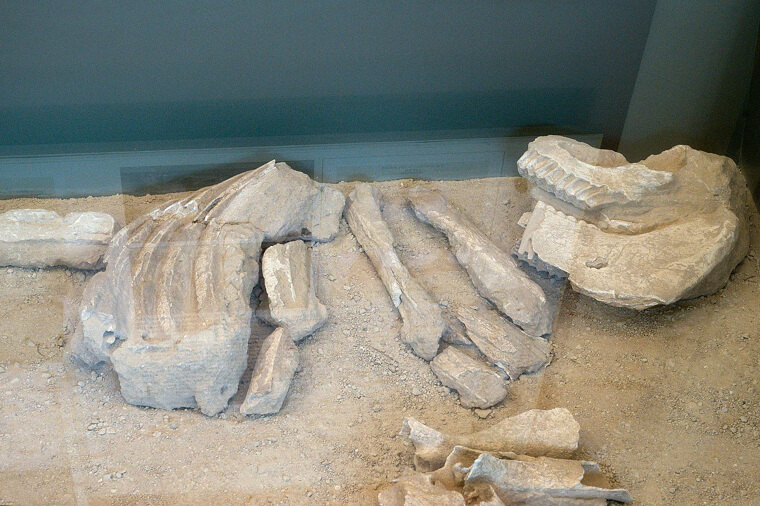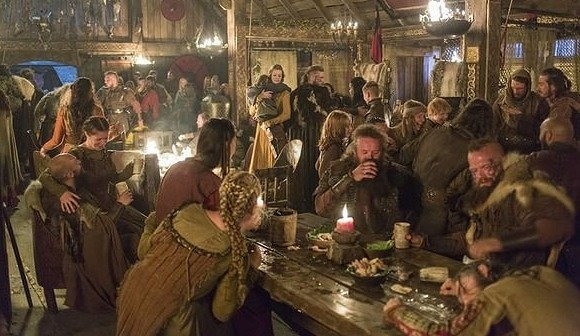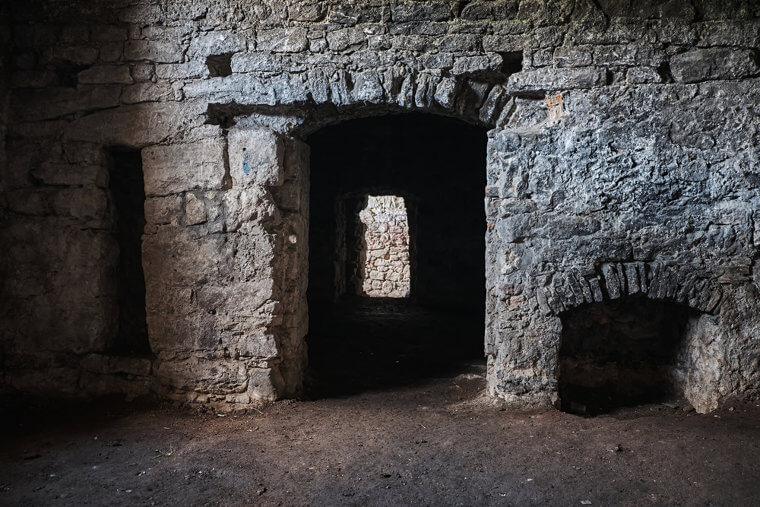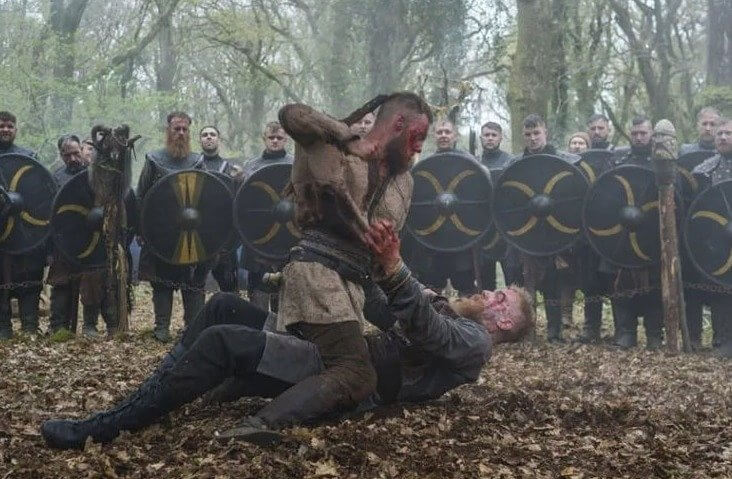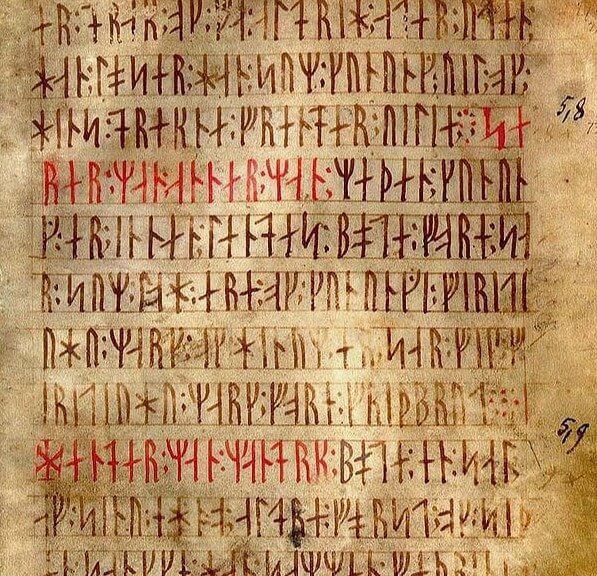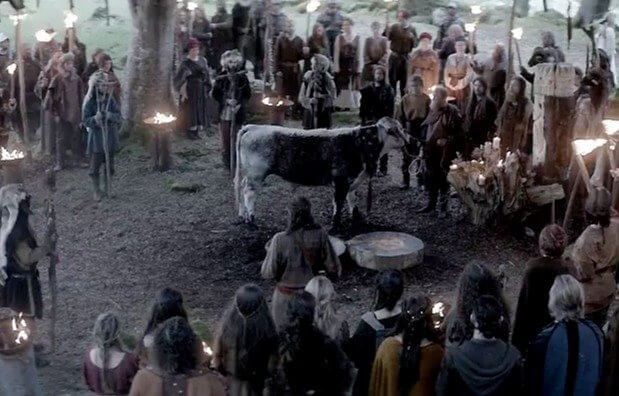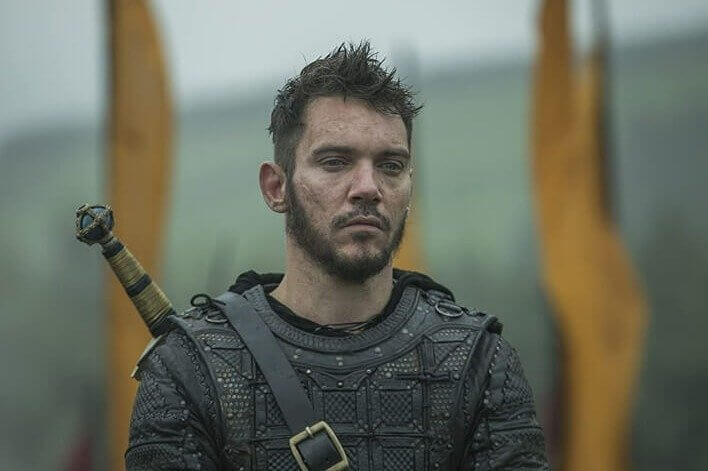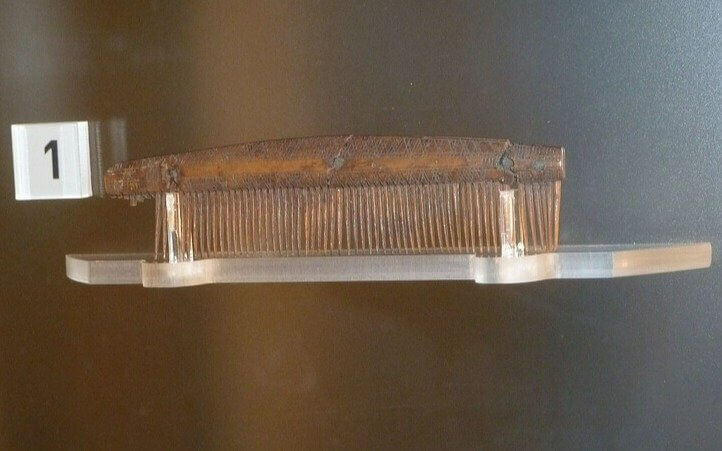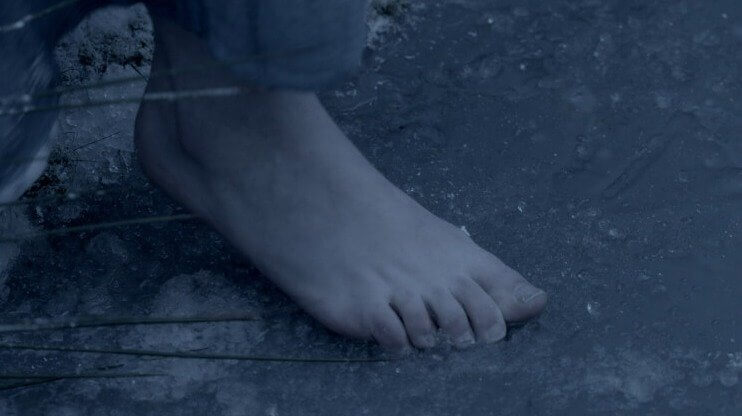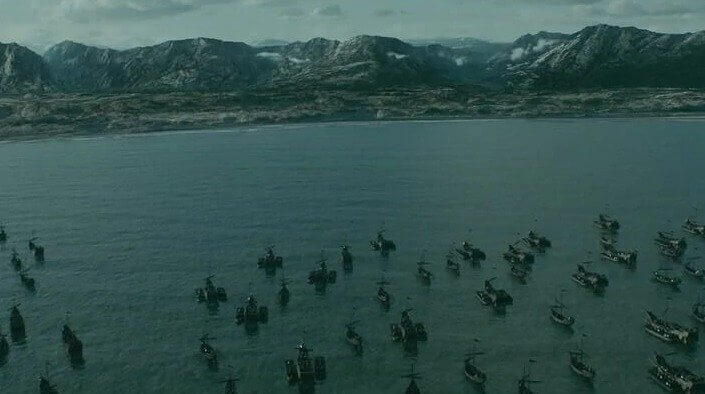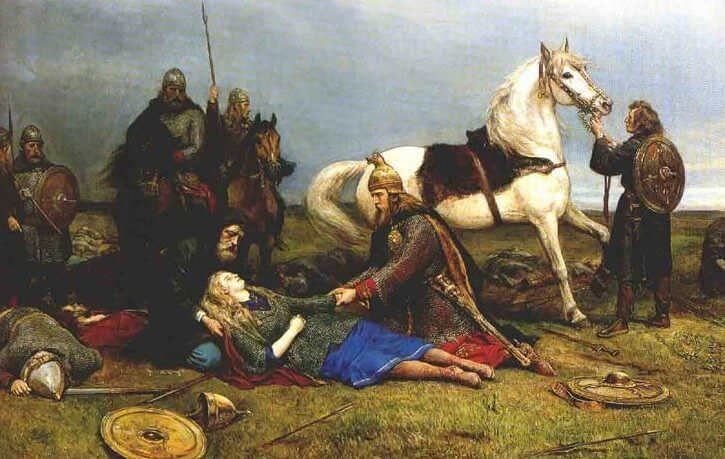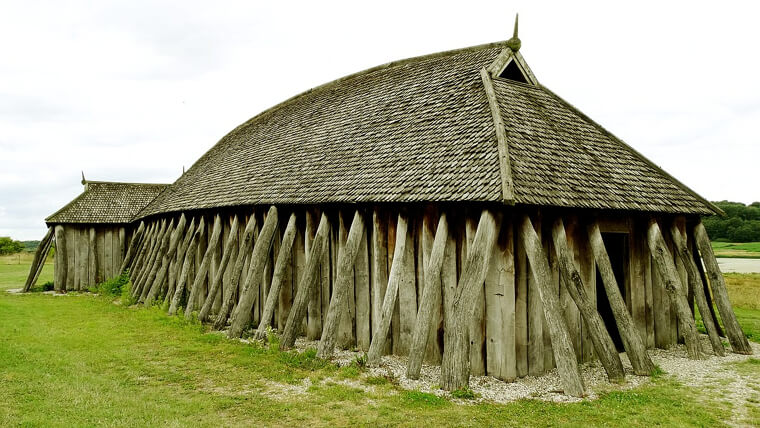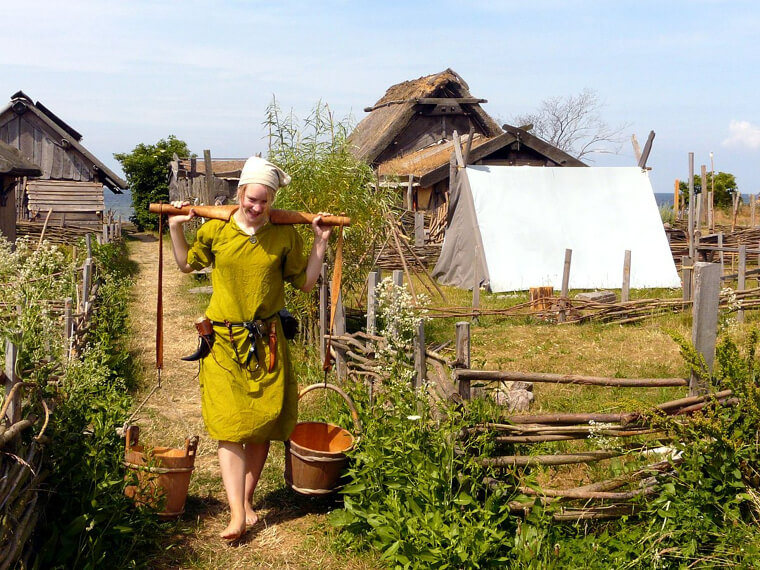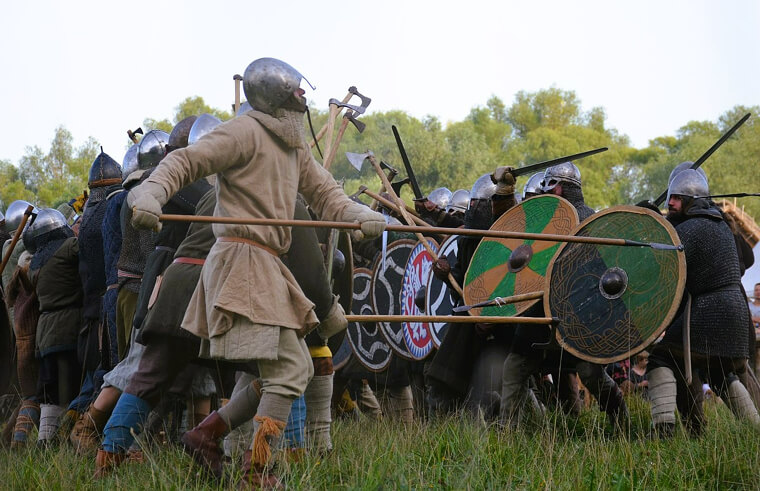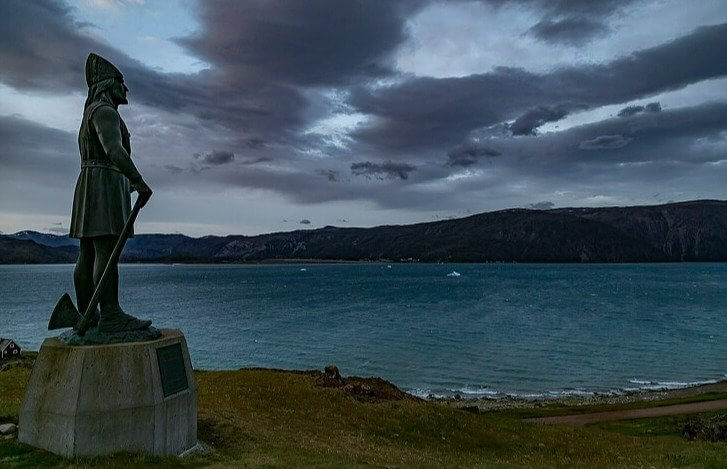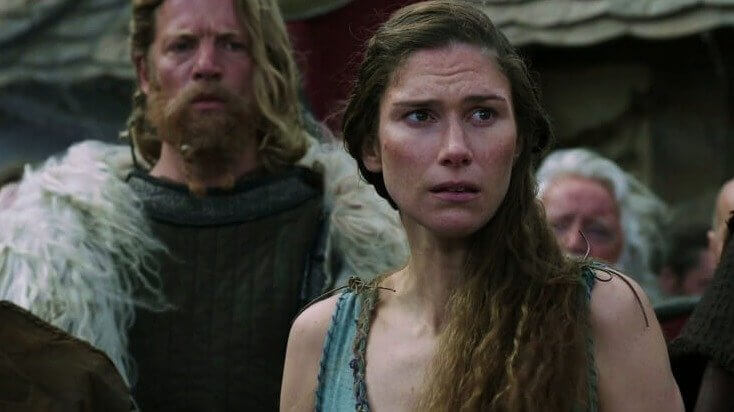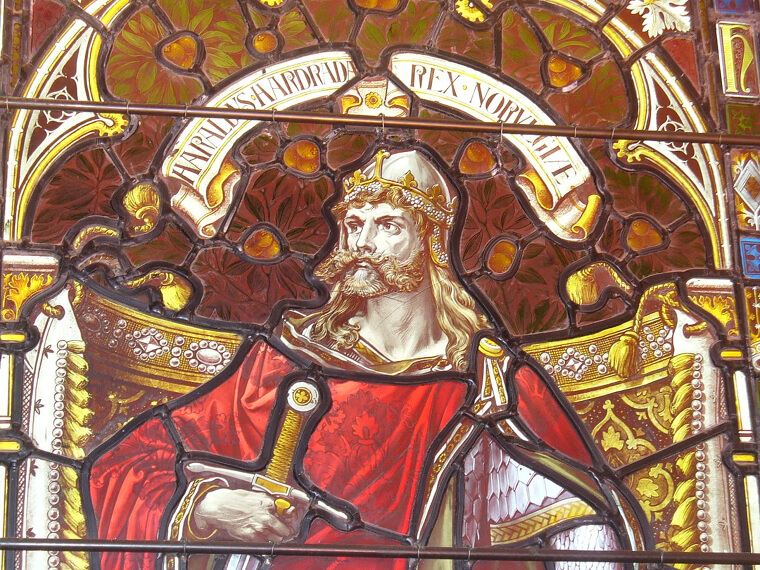Vikings Had a Very Specific Preference for Slaves
While the Vikings enslaved people from everywhere, they preferred thralls from certain places if they were going to keep them. They tended to keep those they captured that were Germanic, Anglo-Saxon, and Slavic. People they captured from elsewhere tended to be sold into slavery in markets in Europe and the Middle East. But as you've already seen, a preference for people from certain regions didn't make the Vikings any less cruel toward slaves.
While they chose some slaves to be theirs, the Vikings sold most of their slaves, and this was a bedrock of their economy. They began to stop taking slaves as Christianity began to spread in Scandinavia.
The Ordeal: A Special Trial That Decided a Person's Innocence or Guilt
It wasn't uncommon for people to undergo trials to determine innocence or guilt back in the day. For example, in Colonial America, if a person came out unscathed or alive after the witch trials, they were considered guilty. However, the Vikings had a different way of going about things. If someone survived "The Ordeal," then they were declared innocent. The "Ordeal" involved a couple of different trials, but some were more commonly used.
Sometimes a person would be drowned, and if they survived, then they were innocent. Other times, their hands would be dipped into boiling water, or they would have to carry red-hot iron.
There Was a Shortage of Viking Women Because They Died Younger
Unfortunately, a preference for having male children over female children is a trend that has been seen throughout history and even relatively recently in some countries. The same was true of the Vikings, who preferred to have male children and, as a result, took better care of the males. This led to more girls dying at a young age than boys, which led to there being a disparity in the ratio of men to women.
Some researchers even think this may have influenced the Viking economy enough to be one of the reasons they enslaved so many women and children, as they didn't have enough to work back home.
Unlike Most Women at the Time, Viking Women Could Divorce, Own Land, and Fight
While Viking women weren't exactly equal as we think of it today, they did have a couple of other opportunities that other women of the age didn't. That is, as long as they weren't thralls. For example, unlike women from other societies during that time period, Viking women were allowed to divorce, own land, and lead a clan. There is even evidence of some Viking women becoming warriors and taking part in battles.
Although it's still being debated, some researchers point to female burials that include things like shields, swords, and arrows. Valkyries, or female warriors, are also prominent figures in old Norse mythology.
Women Were Punished More Severely for Committing the Same Crimes as Men
It's no surprise that there wasn't as much equality 1,000 years ago as there is today. But as we just mentioned, there were arguably more opportunities for Viking women than for women from other cultures during that time. Still, that doesn't mean that things were equal. Women were often punished more severely than men if they committed the same crimes. For example, women that were slaves sometimes had their hands or feet cut off for even minor offenses.
There are some cases of Viking women who committed adultery being punished by having their noses and ears cut off. Comparatively, Viking men who were caught committing adultery would simply be chastised.
Vikings Filed Grooves and Stripes Into Their Teeth to Scare Enemies
One of the more intriguing Viking practices researchers have uncovered is that they filed their teeth. The practice was pretty painful, so they probably had a good reason for doing it. However, researchers are still debating the reason why and if it was for things like showing off status or purely cosmetic. Many agree that it was most likely used to intimidate and scare enemies on the battlefield (and off).
Some have suggested that they may have picked up the practice from Native Americans, who also filed their teeth during that time. Researchers have also found thralls (the people enslaved by Vikings) with filed teeth.
After Passing Away, Some Were Cremated With Their (very Alive) Slaves
As one might expect, some of the most extravagant Viking funerals were reserved for high-ranking members of society. Sometimes, this involved placing that person's body on a longboat with all of their possessions and then setting it on fire while it sailed out to sea. And unfortunately for that person's slaves, they were sometimes included on the boat with the other possessions. Worst of all, it didn't matter if they were alive when this happened.
The Vikings basically sacrificed the thralls and placed them alongside their master's body. Together, they were all sent out to sea on a burning ship and eventually ended up on the ocean floor.
Some Vikings Bleached Their Hair
When you think of Vikings, the odds are that you think of tall warriors with bleach-blonde hair. And while that was certainly true of some, others occasionally had to bleach their hair in order to fit in with the beauty standards of the time. Researchers know that some Viking men bleached their hair to align with beauty standards but also to deter lice from making a home in their hair.
The lice part makes sense, and we imagine that was a big issue back then, but we just have a hard time imagining a burly warrior bleaching their hair because it was what was popular 1,000 years ago.
Vikings Sometimes Put Their Newborns Out to Die
The Middle Ages were a really dark time where only the strong survived. This was even truer when it came to the Vikings, whose whole belief system revolved around the idea of a warrior culture and contribution. Because of this, they were known to leave out to die any babies who had deformities. This involved them stripping the baby and leaving it in the forest to starve or die from harsh weather.
There are also accounts of them throwing a child overboard if they weren't contributing as they should. It should also be mentioned that many other societies throughout history and even relatively recently have practiced some form of infanticide.
The Legendary "Blood Eagle" Torture Method
The Vikings were no strangers to the use of torture. They would often subject their captured victims to all sorts of different punishments. However, there is one punishment that stands out as especially cruel. It's so horrific that researchers aren't even entirely sure the Vikings actually used it. And if they did, it was almost certainly saved for those the Vikings truly despised. It was called the blood eagle.
It involved carving an eagle into someone's back before their ribs were chopped out one by one. The Vikings would then pull the person's skin and bones back to create the shape of wings. The person would be alive the entire time, and just for good measure, Vikings would rub salt into the wounds.
They Used Men-On-Men Intimacy to Assert Dominance
It goes without saying, but homosexuality wasn't viewed the same a thousand years ago as it is today. That's especially true for the Vikings, who would sometimes use these types of relations to assert dominance over another man. The person "on top" would be the one asserting their dominance as the Vikings viewed it. So, the Viking's view of homosexuality was complicated, and it was very different from how we view it today.
However, there were also laws that forbid people from claiming that others were homosexual, as this was often considered an insult to someone's masculinity and resulted in a fight, often to the death. Talk about mixed messages!
It Didn't End With Death: The Vikings Also Mutilated Their Victims' Remains
The Vikings were known for their brutality, even during their time, but their use of violence didn't end when their victims were dead. Because they believed that more extreme acts of violence would allow them to enter Valhalla (a divine place), they would sometimes mutilate the bodies of their victims. They did this to impress their gods and bring shame to their enemies. It probably also added to their reputation as ruthless killers and raiders.
The thought behind this was that the more brutally they treated their opponents, the more likely the gods would notice them and grant them entry when it came time for them to enter Valhalla.
They Castrated and Enslaved Monks
The Vikings were prolific slave traders. And while they usually targeted women and children, male monks were also high on their list for capture. This is because highly educated slaves were sought after in Eastern markets. So, the Vikings would target the monks and take them captive to be sold. But before selling them on the market, they also castrated them.
None of that sounds like a very good time, especially not the body-altering part. The Vikings also frequently targeted monasteries for their wealth as well.
This Famous Viking Was Allegedly Killed By a Bite From a Beheaded Opponent's Head
The Vikings are surrounded by plenty of myths, legends, and sagas. However, there is one legend that has a surprising amount of merit to it and is quite odd. A Viking named Sigurd Eysteinsson, or Sigmund the Mighty, was allegedly done in by a bite from his opponent, who was already deceased and beheaded. The legend goes that Sigmund was riding back with his opponent's head attached to his saddle when the bite took place.
The head belonged to Máel Brigte the Bucktooth, which is a fitting name for a story like this, but we digress. Allegedly, the bite led to an infection, which eventually killed Sigmund.
The Terrorizing Berserkers Went Into Battle With Lots of Rage and No Armor
Most people have heard of Viking berserkers before. They were elite Viking warriors that entered the battle in a frenzied state. Berserkers didn't wear armor and instead relied on a pure rage that historians describe as a trance to terrify, hack, and slash at their enemies. Unfortunately for other Vikings, these berserkers were so rage-ridden that it wasn't uncommon for them to start swinging their axes at their own comrades.
Facing off with a Viking is scary enough, but imagine facing off with one that shrugs off slashes to the body and still keeps coming at you. They were so fierce that they may have helped give rise to the legend of the werewolf.
Berserkers Might've Taken Drugs, Causing Them to Attack Both Enemies and Friends
While it's fiercely debated, some researchers believe that the Viking berserker may have taken some kind of drug to enter their legendary state of rage. It would make sense, considering there are stories of them just shrugging off life-threatening wounds in the middle of battle. Just what substance they took is also debated, with some sources saying it was a petal they would rub all over their body and others theorizing that they ingested mushrooms.
A recent hypothesis is that they used henbane, which lowers blood pressure and might explain why there are stories of them not losing much blood in battle. It also would've also caused them to want to take off their clothes and not be able to recognize faces.
They Organized Horse-Fighting Matches
While we usually think of Vikings only riding in longships, they also rode horses into battle, although not in large numbers. To determine what horses were the strongest, the Vikings used something called Hestavíg. They would put two horses into an arena and place a mare nearby. The mare would be in heat, which would cause the two male horses to fight one another. The stronger horse would emerge victorious.
The other horse would usually not make it out of the arena alive. This was also done for sport, although the marine purpose was to pick out the best horses for breeding.
They Hunted Giant Sea Creatures Without Any Modern Tools or Weapons
We're not talking about Vikings hunting the Kraken here, but we are saying they hunted things like whales and walruses. The Vikings spent a lot of time out on the open ocean and often ran into different animals. Still, it's quite impressive that they could hunt creatures as giant as a whale despite lacking modern tools, boats, or weapons. It just goes to show how fearsome and skilled they were at sea.
Researchers know that they hunted these animals because things like bones and tusks have been uncovered at Viking settlements. Scientists have identified a number of bones from blue whales in Iceland, where the species is exceedingly rare today.
Human Waste Was Used to Create Torches and Fires
When you see Vikings depicted in media, they're often off pillaging and raiding a village somewhere. This includes setting fire to homes and whatever else happens to be in their way. However, it doesn't often include just how those Vikings created their fire and torches. It turns out that the Vikings had a special method that involved boiling fungi in human urine. The nitrate in the urine apparently allowed the fire to burn longer.
This meant that the Vikings' torches would burn long enough to be sent hurling onto thatch roofs and catch them alight. We're sure they also just used them to get around at night, too.
Their "Games" Weren't Playful - They Were Very Dangerous
Since the rest of their lives were filled with immeasurable amounts of danger, it would only make sense that the games they played were as well. Some Viking games would occasionally end in the death of one of the participants, whether as the result of anger or just an accident. For example, one Viking game involved holding a person underwater and doing your best not to let them catch air.
As you might imagine, this sometimes didn't end well for the person being held underwater. Suffice it to say, these ancient "games" probably won't be making a comeback any time soon.
They Took "Tarring and Feathering" Torture to Another Level
Most people have heard of a punishment called tarring and feathering. It involves pouring hot tar onto someone and then covering them in feathers. That might already sound pretty horrible, but the Viking version took this one step further. The Vikings would tar and feather someone and then make them run between two lines of people. The people were then forced to throw bricks at the accused, or else they would be fined.
The good news is that once the accused reached the end of the line, they were free to go. That is, if they survived their ordeal. We're sure they had a couple of scars to show for it, too.
A Holmgang Was the Viking Version Of the Duel - And Ended in Death
This one shouldn't come as too much of a surprise for a people known for being warlike, but the Vikings actually had their own version of a duel. It was called a holmgang and was used when there was a dispute. It saw two participants fight to the death whenever a disagreement arose. Someone could also pick a champion to fight a holmgang for them if there was just no chance of them winning.
However, a failure to fight the holmgang at all resulted in a loss. Like duels, there was a problem with this method of settling disputes, which is explored in another fact and seems fairly obvious today.
Ritual Animal Sacrifices Spread Plenty of Diseases
Before Christianity became the dominant religion among the Vikings, they would often make sacrifices to their different gods. These sacrifices included animals and, as one might imagine, lots of blood. One saga that follows the story of Haakon the Good states that worshippers collected the blood of many different animals into bowls during a ceremony and then covered all of the temple's walls in animal blood. They then cut up and ate the meat during a feast.
With things like this taking place, it's not hard to see why disease might've been common among the Vikings during Medieval Age Europe. These ceremonies usually took place during the summer and winter solstices.
Parasite Worm Infections Were so Common, They Eventually Developed a Genetic Mutation From It
While it was easy to contract many different diseases during the Middle Ages, the Vikings apparently suffered from parasitic worms a bit more than most. This was because of their affinity for eating raw meat, especially liver and lungs. The issue was so widespread that the Vikings developed a genetic mutation to help deal with it. Unfortunately, that mutation can lead to a higher risk of lung disease for some people today.
That means that anyone who has Viking ancestry — which is a lot of people — is at a higher risk for lung disease. Around 10% of Scandinavia's population has Viking ancestry.
The Louvre Was Originally Built as a Defense From Vikings
While the Louvre is known today as one of the world's grandest museums, it started out as a military fortification. The palace was originally a castle and fortress built by King Philip II. It was meant to protect the city while the king was away crusading, as Paris had been attacked numerous times by Vikings in the preceding centuries. The siege of 845 led to France paying the Vikings a handsome sum to leave the city.
The Louvre Castle was later demolished and replaced by the Louvre Palace, which is the museum that we know today. It was brought down in stages, finally being fully dismantled in 1660.
When Vikings Were Taken Prisoner, Their Slaves Endured the Same Treatment as Them
Being a slave during the age of the Vikings was already very bad. However, it was even worse when you consider how they were treated if their masters were captured and tortured. The slaves of opponents were made to endure the exact same treatment as their masters. So, if someone had their arm or another limb cut off, then the same would happen to that person's slaves, or thralls as they were called.
However, considering how badly the Vikings treated their normal or "free" prisoners, it isn't that surprising that they would treat a prisoner's slaves just as badly or worse.
Holmgangs Were Taken Advantage of and Ultimately Outlawed
While it might seem obvious now, it took a little while for the Vikings to figure out that holmgangs, or Viking duels, are susceptible to abuse. People who were exceptionally strong or skilled would sometimes use a holmgang to take another person's belongings whenever they wanted. Because of this, Vikings began outlawing the practice around the 11th century. Vikings in Iceland got rid of the practice around 1006, while it was outlawed elsewhere shortly after.
That said, we imagine that just as outlawing duels didn't necessarily stop them overnight, holmgangs probably continued in a more informal fashion for a bit, even after they were forbidden.
Do You Know How Many English Words Actually Come From the Viking Language?
The Vikings had an immense impact on Western culture. So much so that they even heavily influenced the English language. For example, the word "Thursday" is from the old Norse "Thor's Day." Another word, "berserk," means "bear shirt" in old Norse since berserkers would sometimes wear bear skin into battle. Other words include ransack, scathe, slaughter, club, keel, and many others. While those might align with what we think of Vikings, there were also many old Norse words that infiltrated other parts of society.
For example, English gets bylaw, law, loan, husband, and gun from the old Norse. The word gun actually comes from the name "Gunnhildr," which is a combination of two words that mean war and battle, according to Babbel.
They Used Cow Rodeos as a Form of Punishment
While modern rodeos are done for sport, Viking rodeos were done as a form of punishment. Before holmgangs were outlawed, the Vikings used their rodeos to punish those who didn't want to accept a holmgang challenge. They would bring the person to an arena and then bring in a cow. The Vikings would then cover the cow's tail in grease while also doing the same to the person's shoes.
They would then prod the cow to get it going and force the person in the arena to try and grab onto the cow's tail and hold it for whatever amount of time.
Most Vikings Were Short and Lean
When Vikings are depicted in media, they're often shown as giant, hulking men with big muscles. And while some Vikings of this sort almost definitely existed, it's thought that most of them were short and lean. The truth is that all over Europe, people were shorter during this period, and the Vikings were no exception. However, it's thought that they were probably naturally still quite strong from tending the fields.
Most modern studies put the average height of Scandanavians during this time at around 5 feet 6 inches. For comparison, that's around 3 inches shorter than the modern height today.
Physical Appearance Was Important to Them
Needless to say, hygiene wasn't the same a thousand years ago as it is today. So, because of that and the simple fact that Vikings are often depicted murdering people, one might think they also didn't take care of their hygiene. However, researchers know now know the opposite to be true. Viking burials have been found with things like combs, tweezers, and other self-care items. It's also thought that they used soap.
In addition, even men would sometimes have names that reflected the quality of their hair or some other physical attribute, meaning that aesthetics were important in Viking society.
They Might've Hanged People From Their Feet
There is no shortage of violence in Viking lore. This next one is pretty disturbing though, especially if the mention of Achilles tendons makes you shutter. There is a saga that follows a Viking warrior named Hrafnkel called Freysgoða. In the sage, it's said that Hrafnkel and his men were detained while they slept. They were then hanged from their feet, but they weren't just hanged as you might expect.
Instead, holes were made behind their tendons so that rope could be pulled through the Hrafnkel, and his men could be hung like pieces of human meat. Just the thought makes us shiver.
Vikings Brought Lots of Illnesses to Scandinavia
The Vikings were known for their travels and long voyages to distant lands, so this next one makes sense. It's thought that the Vikings were responsible for bringing some of the Medieval world's worst afflictions to Scandinavia. Their constant raiding led to them bringing back smallpox and leprosy. After raids into Ireland, where leprosy was running rampant during that time, some of the slaves they brought back also brought with them leprosy.
And unlike today, there were no vaccines around the year 1,000 A.D. So, in some cases, their constant raids may have actually done more harm to themselves than good.
They (perhaps Surprisingly) Really Valued Honesty
It might seem counter to the image of Vikings as being bloodthirsty warriors, but the Vikings put a lot of emphasis on honor and honesty. This showed in how they structured their laws, many of which have influenced modern law. Apparently, they would also let people off with lighter punishments if they told the truth after a crime was committed. For example, if a murder was committed, the perpetrator would get off with a lighter sentence if they confessed.
The Vikings also tended to view crimes they deemed cowardly with more contempt. For example, things like arson or murder without giving the victim a chance to defend themselves would receive harsher punishment.
Viking Deforestation Might Be Affecting Today's Climate
It's no secret that Iceland is almost completely devoid of trees today. Vikings cut down nearly all of the trees in Iceland in order to grow crops and for use as building materials. However, some researchers think that widespread deforestation may be adversely affecting today's climate. Around 40% of Iceland is considered a desert today, according to The New York Times. The areas receive rain, but the soil is so fragile that it doesn't hold moisture.
Some areas also regularly experience dust storms. Today, there is a large-scale reforestation effort underway in Iceland, though the process is extremely arduous because the soil must first be stabilized.
The Majority of Were Actually Farmers, Not Fighters
It might be hard to imagine since they've been depicted as nothing but bloodthirsty warriors by media and by their own mythology for so long, but researchers believe the majority of Vikings were actually farmers. A quaint little village akin to the Shire might not be the first thing that comes to mind when you think of the Vikings, but it turns out that might not be too far from the truth.
It's thought that warriors were in the minority, which would make sense considering that the Vikings often ended up settling the land they raided and ran farms there, whether in Iceland, France, or the U.K.
Vikings Weren't Very Unified
Despite sometimes being portrayed as a unified people or only consisting of a couple of clans, Vikings actually consisted of many different people living in Scandinavia. There were also many smaller groups of Vikings living in Scandinavia that often fought one another and others for things like loot and trade. In addition, some later periods saw people travel to Scandinavia from southern Europe and Asia and assimilate into Viking culture.
The Vikings themselves would eventually split up and settle in many different parts of Europe, heavily influencing history. For example, some Vikings settled in modern-day northern France, becoming the Normans and conquering the U.K. and southern Italy.
Erik the Red Was Constantly Being Exiled Because of His Temper
Luckily, researchers know quite a bit about famous Viking figures from a thousand years ago. This is because the Vikings had a relatively strong tradition of telling sagas. One such saga tells of a man named Erik the Red, who discovered Greenland. His real name was Erik Thorvaldsson, and he was born around the 10th century. However, he was constantly being exiled for his temper and for breaking the law.
He was once exiled from Iceland for killing his servants. Apparently, his servants accidentally triggered a landslide that tore down his home. This may have been for the best, though, as his constant search for a new home eventually led to the discovery of North America.
They Sure Made a Name for Themselves in the Slave Trade
While the Vikings certainly had a complex culture that could be both similar to ours and barbaric at the same time, there is no disputing the fact that they played a huge role in the slave trade of the time. The Vikings took many women and children as slaves to be sold to the Byzantines and kingdoms in the Middle East. Researchers now know that the need for slaves was a driving factor in Viking raids.
Scholars from the period also talk of a Viking slave trade that extended from Spain to Egypt. The Vikings traded with people as far away as modern-day Iran.
Harald Hardrada's Death Marked the End of the Viking Age
While there is some debate as to the exact end of the Viking age, many think it began with the death of Harald Hardrada. His entire life reads as it came straight from a fictional epic, but he met his end during a failed invasion of England at the Battle of Stamford Bridge. This was only weeks before the battle of Hastings and the Normans, who themselves were descended from Vikings, the conquest of England.
When Hardrada passed away, Christianity was already common among Scandinavians, which meant that they had lost the ability to kidnap Christian slaves from the British Isles and elsewhere. This, in turn, meant that there was no real point in raiding.

